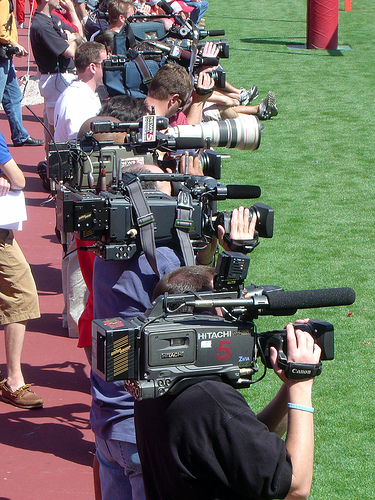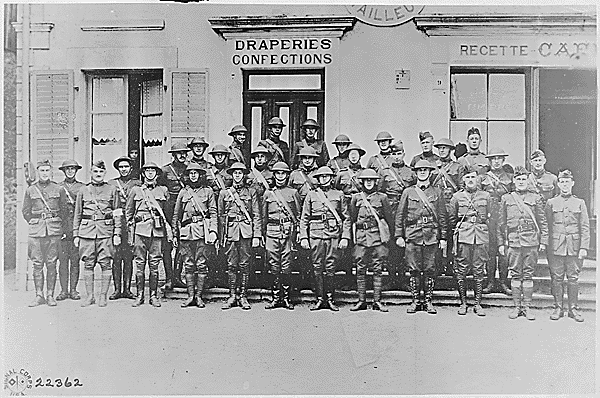 The New York Times Magazine published The Great Ivy League Nude Posture Photo Scandal in January of 1995. Still available online, it is a fascinating tale that took reporter Ron Rosenbaum on a wild hunt through multiple archives in a quest for long lost photographs. I spotted a link to the article in a post on Boing Boing – and once I started reading it I couldn’t stop.
The New York Times Magazine published The Great Ivy League Nude Posture Photo Scandal in January of 1995. Still available online, it is a fascinating tale that took reporter Ron Rosenbaum on a wild hunt through multiple archives in a quest for long lost photographs. I spotted a link to the article in a post on Boing Boing – and once I started reading it I couldn’t stop.
The story includes thorough coverage of the research (and the footwork and the paperwork) it took to find the final resting place of some very controversial photographs. Taken as part of the orientation process of new students at Ivy League and Seven Sisters school campuses predominately during the 1940’s, 50’s and 60’s, these photos were theoretically taken to screen for students who needed remedial posture classes. William Herbert Sheldon was a driving force behind many of the photos. Best known for assigning people into three categories of body types in the 1940s, Sheldon based his categories of endomorphic, mesomorphic, and ectomorphic on measurements done using the student photographs. Rosenbaum’s quest was to find the real story behind the photos and to discover if any of the photos survived the purging fires at that occurred at many of the schools involved.
His first stop was Harvard’s archives:
Harley P. Holden, curator of Harvard’s archives, said that from the 1880’s to the 1940’s the university had its own posture-photo program in which some 3,500 pictures of its students were taken. Most were destroyed 15 or 20 years ago “for privacy scruples,” Holden said. Nonetheless, quite a few Harvard nudes can be found illustrating Sheldon’s book on body types, the Atlas of Men. Radcliffe took posture photos from 1931 to 1961; the curator there said that most of them had been destroyed (although some might be missing) and that none were taken by Sheldon.
A major turning point in Sheldon’s project came in 1950. He went to the University of Washington to further his plans to make an Altas of Women. The families of a few photographed females students at the university questioned the real purpose of the photographs. The resulting upheaval culminated in the destruction of many photographs. A Time article dated September 25, 1950, Revolt at Washington, documents the events in Washington and notes that over 800 photos were burned.
Rosenbaum’s article goes on mention that thousands of photos were subsequently burned at Harvard, Vassar and Yale in the 60’s and 70’s – but he continued to hunt for the ones that some believed had escaped into Sheldon’s private archives. A chain of contacts led Rosenbaum to Sheldon’s former associate Roland D. Elderkin. An elderly gentleman of 84 at the time of the story’s publication, Elderkin spent years assisting Sheldon. He took many of the photographs. And after being turned down by many archives, he found Sheldon’s records, photos and negatives a home in the National Anthropological Archives.
In 1987, the curators of the National Anthropological Archives acquired the remains of Sheldon’s life work, which were gathering dust in “dead storage” in a Goodwill warehouse in Boston. While there were solid archival reasons for making the acquisition, the curators are clearly aware that they harbor some potentially explosive material in their storage rooms. And they did not make it easy for me to gain access.
On my first visit, I was informed by a good-natured but wary supervisor that the restrictive grant of Sheldon’s materials by his estate would permit me to review only the written materials in the Sheldon archives. The actual photographs, he said, were off-limits. To see them, I would have to petition the chief of archivists. Determined to pursue the matter to the bitter end, I began the process of applying for permission.
In their online guide to collections I found the entry for SHELDON, WILLIAM HERBERT (1898-1977), Papers. It notes that the collection is 150 linear feet. It also includes a line that reads “RESTRICTION: The photographic material is not available for research.”
While Rosenbaum’s hunt was for the photographs, some of his most interesting discoveries came from the papers themselves. During his three month wait for permission to view the photos, he reviewed boxes of letters and notes. See Rosenbaum’s article for details – but it was Sheldon’s own words in those papers that revealed he held racist views and that he seemed more concerned with his research than with the psychological impact of his research on the girls whose photos he arranged to take.
When finally Rosenbaum was given the opportunity to review some 20,000 negatives of the photos (no photos and no names) we read:
A curator trundled in a library cart from the storage facility. Teetering on top of the cart were stacks of big, gray cardboard boxes. The curator handed me a pair of the white cotton gloves that researchers must use to handle archival material.
I love it – gray cardboard boxes and white cotton gloves. He even mentions the finding aids and gives examples of how the groups of photos are described. I also appreciate the earlier acknowledgment of the “solid archival reasons for making the acquisition”.
Rosenbaum looked through a lot of the negatives, mostly to verify that what the finding aids claimed were present were in fact in those gray boxes. He was struck by the contrast between the expressions on the mens’ and womens’ faces.
For the most part, the men looked diffident, oblivious. That’s not surprising considering that men of that era were accustomed to undressing for draft physicals and athletic-squad weigh-ins. But the faces of the women were another story. I was surprised at how many looked deeply unhappy, as if pained at being subjected to this procedure. On the faces of quite a few I saw what looked like grimaces, reflecting pronounced discomfort, perhaps even anger. I was not much more comfortable myself sitting there in the midst of stacks of boxes of such images. There I was at the end of my quest. I’d tracked down the fabled photographs, but the lessons of the posture-photo ritual were elusive.
He found the missing photos – but no easy answers. This is a great combination of a compelling story and a realistic representation of archives and archivists. The records don’t always hold the answers to the question you thought you were asking – but sometimes they hold secrets you hadn’t expected.
So many elements tie back to the choices made by individual archivists – sometimes made in the heat of the moment or under great community pressure. I think this story is a particularly poignant example of the downstream effects of these sorts of hard choices. It isn’t often that we can see cause and effect this clearly.
What would you have done? Would you have burned the photos or stored them away? Would you have stepped forward to take Sheldon’s records? If something like this happened today – what do you think the future of these photos might be?





